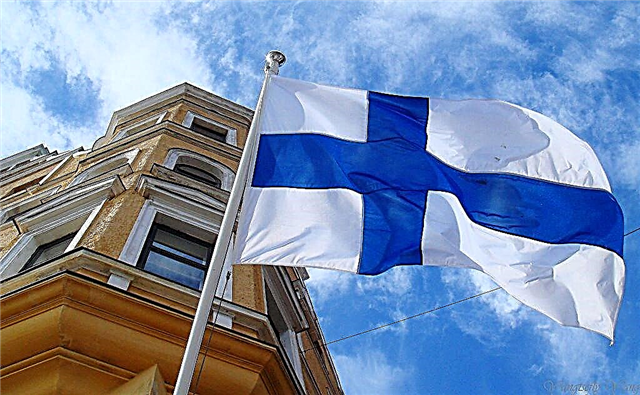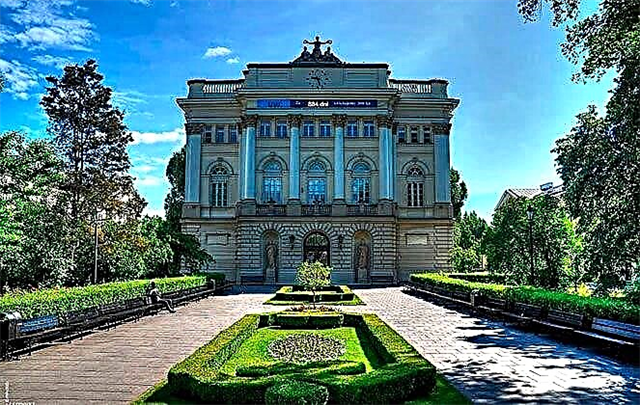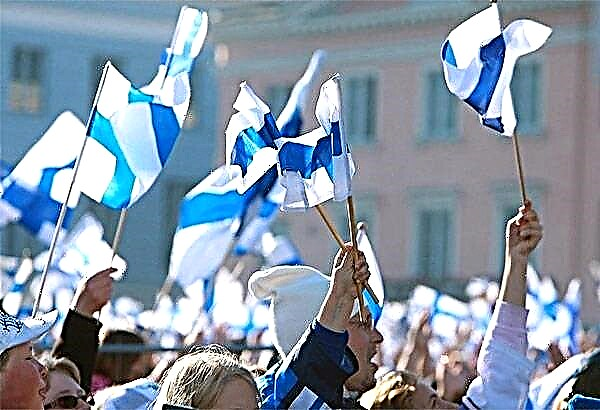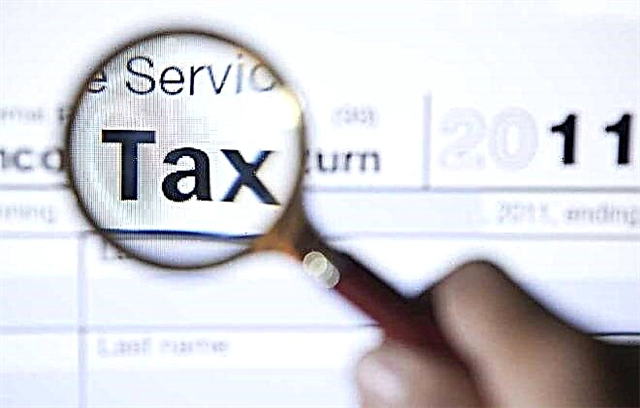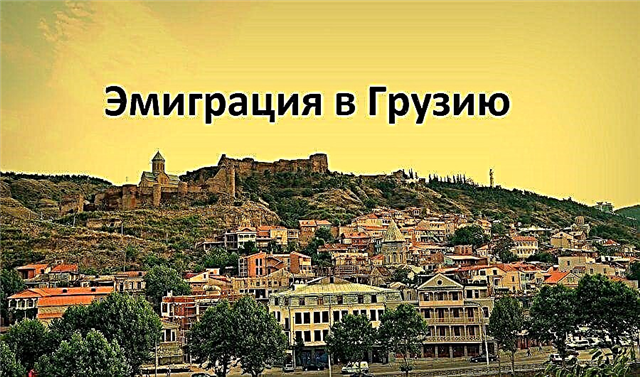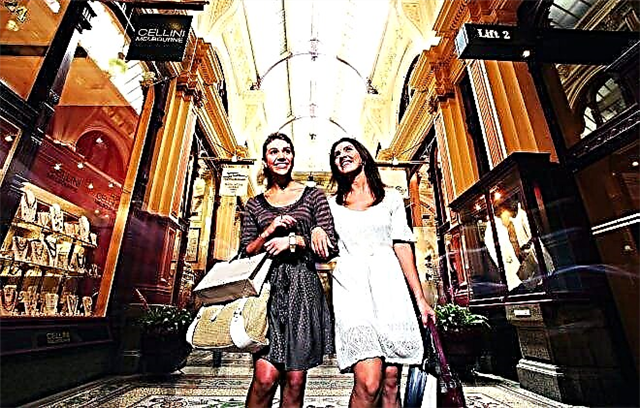Hohenschwangau Castle is one of the most beautiful castles in Europe. Every tourist who comes to Germany dreams of visiting the favorite residence of the Bavarian kings. Tours are constantly organized to the castle, but you can get to Hohenschwangau on your own with the help of tourist brochures.

A brief history of the castle
Before the appearance of Hohenschwangau, a fortress stood in its place. It was built for the great knights of Schwangau in the 12th century. In 1547, the fortress was restored by the imperial adviser Johann von Paumgartner: it became not only a residence, but also a defensive fortification that could withstand a long siege. After the invasion of Napoleon's troops, the building turned into ruins.
Once the king of Bavaria, Maximilian II, who was then still the crown prince, drove to this beautiful land. He approached the ruins of the fortress and was impressed by the beautiful scenery. Then Maximilian II decided to acquire the ruins and the surrounding area.
He gave the order to restore the premises of the fortress and build new ones so that in the new castle the royal family could be closer to nature. By the way, the young monarch left behind more than one architectural masterpiece, most of them were inspired by German fairy tales.
Hohenschwangau Castle was built only 6 years later.
The building plan was developed by the architect Domenico Cavallo. The castle fits perfectly into the landscape. Modern architects, looking at him, exclaim that Hohenschwangau seemed to have grown on a rock.
After a while, the no less fabulous Neuschwanstein grew up opposite the yellow castle, but already on the orders of Ludwig II.
Architectural features of Hohenschwangau
If you look at this beautiful castle today, it is hard to believe that it stands on the site of a gloomy fortress. The bright yellow color of the building, which is so in harmony with the nature around, actually makes it look like a castle from a fairy tale.
The king of Bavaria gave the castle a second life in 1829, so it has survived to this day.
The architectural style of Hohenschwangau is neo-Gothic, which was characteristic of the era of romanticism. Peaked and defensive turrets and a carved stone wall remind of the Middle Ages.
The best architects and artists of that time were involved in the work on the castle. It became not just a summer residence of the royal family, but also hunting grounds. For this reason, Ludwig II, the eldest son of Maximilian II, spent almost his entire short life here.
The name of the Hohenschwangau castle literally translates as "high swan land". Since childhood, King Ludwig loved these majestic birds, so the castle has a lot to do with them. In the courtyard, for example, there is a fountain in the shape of a swan.

Images of birds are found on the walls; even many small details of the interior decoration resemble swans. Everyone who enters the castle grounds finds themselves in a fairy tale that King Ludwig II loved so much.
Interior decoration
The inside of the castle looks no less majestic than the outside. The interior is dominated by lilac and lilac colors. There is a lot of gold, which gives solemnity. If you approach Hohenschwangau along the hill, on the right you can see the annex to the castle. Stairs in the courtyard of the annex lead to the inner halls of the castle. After passing a few steps, we find ourselves in the Hall of the Knights. It was once a chapel, but today tourist groups gather in it.
The next floor can be reached via a spiral staircase. You will first enter the Billiard Room and then the Swan Knight Hall, which was the royal dining room. The walls of this room are decorated with paintings from the saga of the swan knight Lohengrin.
The bedroom of Queen Mary, which is located on the next floor, is made in Turkish style. Ludwig was a connoisseur of Turkish architecture, so he decided to bring some of its details to his palace.
The banquet hall, also called the Hall of Heroes, is the most beautiful room in the castle. In the center of the hall there is a table with pictures from The Saga of the Nibelungs. This valuable gift was presented as a wedding present to Maximilian and Princess Mary of Prussia in 1842. And on the walls are paintings with scenes from the Viking sagas. It was from these works of art that Ludwig II drew inspiration for the construction of Neuschwanstein Castle.
One of the values of the Hohenschwangau castle is the piano, on which Wagner himself performed his works for the king.
The musical instrument stands in the Hohenstaufen Room, which got its name in honor of the dynasty of kings of southern Germany and the emperors of the Holy Roman Empire, which had a connection with the Wittelsbachs.
Next to the castle is the Schwaseenpark, which used to belong to the residence. Today the park is heavily overgrown because no one looks after it. The castle itself offers a beautiful view of the Alpsee lake.
Neither the First nor the Second World Wars did harm to the beautiful castle of the "fairy king". And now it is in the possession of the former royal family of the Wittelsbachs. Now Hohenschwangau Castle is a museum, which is visited by more than 300 thousand tourists annually.
Guided tours of the castle
You can visit Hohenschwangau Castle only with a guided tour (groups of 30 people). The duration of the tour of the castle is only 35 minutes. Taking pictures and filming inside the building is prohibited.

There are no guided tours in Russian, but there is an audio guide that you can use for free. There is a gift shop in the annex next to the castle where you can buy handicrafts.
How to get to Hohenschwangau
The fairytale castle Hohenschwangau, like Neuschwanstein, is located near the city of Füssen. Special buses bring up to the castle.
Two hours before Füssen there is a train from Munich.
The bus journey from the train station to the Hohenschwangau stop takes 8 minutes. Ticket offices are located here.
You can buy a ticket to visit only Hohenschwangau, costing 12 euros, or for 23 euros a ticket to visit two castles. Children under 18 are admitted free of charge.
Ticket offices work from 8.00, but tickets run out by lunchtime. Those who are going to drive up to the castles by their own transport can see how it is more convenient to get there on the map.
The castles are open for visits from 9.00 to 18.00 from April to September. From October to March they are open until 15.30. Closed on Christmas and New Year's Eve. The queues at the ticket offices are long, only those tourists who have booked a ticket in advance pass through the queue.
The castle is located on a hill. You need to climb to it within 15 minutes, but the road is easy. In warmer months, you can go by bus, and in winter - by horse-drawn carriage.
Finally
Hohenschwangau Castle - the seat of the kings of Bavaria. The magnificent architectural structure blends harmoniously with the surrounding nature. A dark medieval fortress once stood on the site of a bright fairytale castle. Ludwig was fond of the sagas of brave knights, so in the castle you can find many paintings and other works of art that illustrate the king's favorite tales.
Hohenschwangau is rightfully considered one of the most beautiful castles not only in Germany, but also in Europe. Hundreds of thousands of tourists come to see it every year.
The city of Füssen, near which the castle is located, can be easily reached by train from Munich, and then by bus. You can enter inside only as part of an excursion group. Your guide will take you through all the halls and rooms of the castle in 35 minutes, telling the amazing story of Hohenschwangau and its inhabitants.

